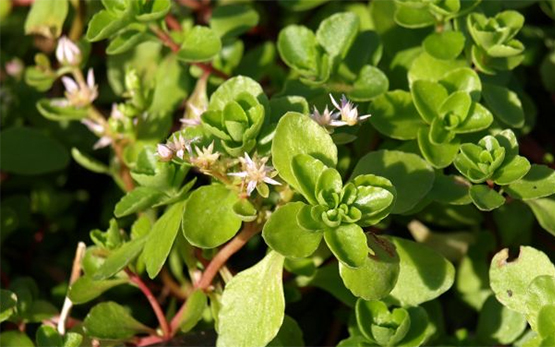- AGFF practical information
- AGFF Fact Sheet U10: Lesser Caucasian Stonecrop in Meadows and Pastures

A succulent species from the stonecrop family which until a few years ago was not considered a wild plant in Switzerland, lesser Caucasian stonecrop (Phedimus stoloniferus S.G. Gmelin) has been identified as a new problem weed in Swiss grassland. Starting from a hard-hit farm in Sumiswald, further affected sites were found in the greater Emmental region between 400 and 1000 m above sea level. Thanks to a wide media response, additional sites in the Mythen area near Schwyz were also pinpointed.
Of vigorous growth habit, the plant spreads via above-ground runners or ‘stolons', displacing the good forage plants. As it takes several weeks to dry out completely, it cannot be processed into hay. The species spreads easily, since it only requires a small piece of stem to take root in the ground to form a new plant. An investigation of the characteristics of the affected sites showed the plants to be highly adaptable.
In trials, various herbicides in different active-substance concentrations and with different application times were tested in the field; none, however, were successful in suppressing lesser Caucasian stonecrop. Not even ploughing, weeding, burning-off, or the use of crude calcium cyanamide managed to achieve a long-term satisfactory result. We may therefore conclude that lesser Caucasian stonecrop is almost impossible to control once it has become established. Only one method proved effective: a blackout plastic film that is laid and anchored on affected areas from April to August. After the film treatment, the area must be resown. This method is only suitable in places where the stonecrop species has only become established over a few square metres. Consequently, early recognition is particularly important, and the further spread of this weed must be prevented at all costs.
Publications
Contact
Further Information





